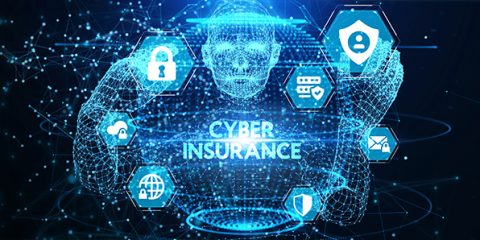10 years ago, cybersecurity was not a commonly-used phrase, even within IT departments. Today, the term is not only well-known, but a major concern for organisations of all sizes, in every sector, in every country around the world.
Over the past 18 months, the number and intensity of attacks has increased dramatically because cybercriminals have become more adept at the business behind threat vectors. They are better organized and have better tools – and are seeing bigger returns as a result.
The cost of cybercrimes, taking into account business interruption, was $6 trillion in 2022. Experts estimate the figure will rise to $10.5 trillion by 2025. That’s a 175% increase within two years.
Why? Right now, a hacker attack occurs every 26 seconds globally. According to the FBI and Interpol, approximately 33 billion accounts will be breached in 2023. That’s about 2,328 a day, with 97 cybercrime victims being created each and every hour!
Cybercriminals’ Enhanced Tool Chest Pays Dividends
For years, bad actors focused on deactivating firewalls and antivirus technologies, and tampering with log entries. Now they are becoming more sophisticated.
Cybercriminals started targeting the cloud, especially public cloud, and related infrastructure, as companies migrated more and more of their operations to the cloud. Then, thanks to SASE solutions, perimeters became better protected.
This prompted the crooks to become increasingly resourceful at bypassing or modifying authentication processes, in order to gain access. This includes finding ways to get into higher-privilege accounts. Now, when they do gain access, they’re wreaking more havoc than ever before. Key personnel account access is being removed, proprietary knowledge is being stolen, resources are being deleted, data destroyed, and service not only denied, but completely stopped.
Again, it’s all about access, and Access Brokers are crawling out of the woodwork. Similar to a real estate broker, access brokers have listings of compromised files that are available for purchase. They also actively solicit and train new recruits. The lion’s share of their business though, comes from buying and selling illegal network access to all types of organisations with a focus on the MUSH sector, and mid-size enterprises with 100 – 1,000 employees and somewhere between 50 million and $1 billion in annual revenues
Unsettling for IT Managers responsible for protecting client and employee data: There was a 112% increase in 2022 over 2021 in the number of advertisements for purloined credentials – and double-digit increases since January 2023.
This is especially worrisome because, according to Verizon’s 2022 data breach report, over 80% of the breaches categorized under web application attacks could be attributed to stolen credentials, which allowed attackers to login, rather than breaking-in.
Compounding the problem: It’s a lot easier for people to go to the dark side these days.
On the dark web, phishing tips and multi-approach breach tutorials are plentiful. Ransomware as a Service exists, and there are account managers who will gladly show inexperienced users how infiltrate corporate accounts.
Thanks to ChatGPT and similar tools, more people are entering the hacking fray because they can now get help with the code – and even have it be executed perfectly for them in minutes.
Ironically, in March 2023, a ChatGPT data breach forced OpenAI, its parent company, to take ChatGPT off-line until the matter was resolved.
Lastly, there has been a spike in well-funded, nation-state attacks.
Think You Won’t Be Targeted in a Nation-State Attack? Think Again.
With increasingly distributed networks, and hybrid working a fact of life today, organisations are routinely creating virtual spaces in which stakeholders can work collaboratively. All to the delight of cybercriminal enterprises, because once entry is gained into one corporate portal, the marauders can hop, skip and jump their way seamlessly into the networks of other connected organisations.
The result is that multi-stage, multi-vector attacks have become the norm.
Today, it’s also highly possible that one of the stakeholders with whom you collaborate regularly, or one of the firms within your supply chain, manufacturers its products offshore.
One of these companies may do business with a company in Russia, Iran, North Korea or China (the top sources of nation-state threat activities, according to Microsoft’s Digital Defense Report 2022). Now, your network could be vulnerable to a nation-state threat vector. All it takes is the smallest of security shortcomings somewhere along the line, for a massive problem to be unleashed. It’s akin to a small ocean wave encountering interference of some kind and being transformed into a rogue wave, which can be highly destructive.
This has become so problematic that many insurance companies no longer cover nation-state attacks, likening them to acts of war, which are not covered by most policies.
Protecting Yourself
We often recommend that clients implement a Multi-Factor Authentication (MFA) solution, such as Cisco’s Duo, to ensure that any device trying to access your network, applications and data is actually in the hands of the person to whom it belongs.
Adaptive MFA is also referred to as “Smart MFA” because it uses AI to determine whether or not the authentication process needs to be ramped up, on a case-by-case basis.
In addition to the verifying the actual device, Adaptive MFA considers the user, and the context in which the individual is using the device. The advantage is that it cuts down on the number of times a valid user is required to re-authenticate – and can identify immediately when unusual patterns are occurring.
For organisations not already using some kind of authentication process, this might be one of the best investments they make this year
it is also prudent to regularly review your policies and protocols, continuously coach your stakeholders on how to spot phishing, and to ensure that your patches are always up to date and have been pushed out to all devices and other endpoints.
Lastly, you will want to review your insurance policies, and the criteria for being compliant, so that you are protected in the event of a breach that takes down your network. That being said, insurance carriers are rethinking their coverage strategies.











.webp)